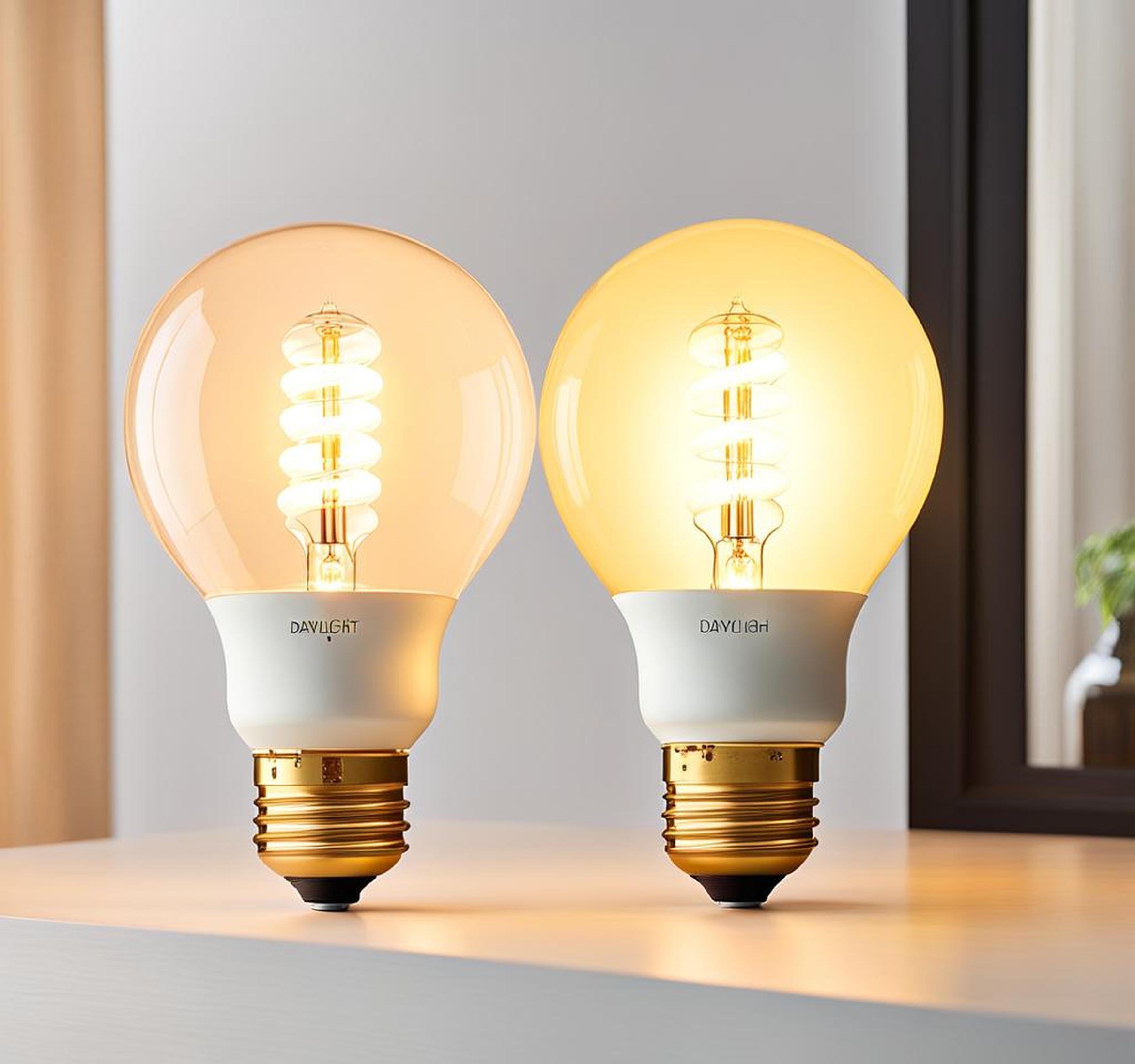When it comes to lighting, we want bright, comfortable illumination that meets our functional needs while creating an enjoyable atmosphere. But with the variety of bulb options available today, making the right choice can get confusing. Two of the most common types–daylight and cool white bulbs–both promise brightness yet differ in important ways that impact how well they light a space.
We’ll examine the key characteristics of each bulb type and analyze how they produce different qualities of light. We’ll also explore recommendations for spaces that require good visibility for work activities. Armed with this knowledge, you’ll be prepared to select bulbs tailored to your unique needs.
Daylight vs Cool White Bulbs
First, let’s decode exactly what makes daylight and cool white bulbs different.
Daylight Bulbs
Daylight bulbs, as the name implies, aim to replicate natural daylight conditions with a brightness and tone similar to that outdoors. They have a higher color temperature ranging from 5500-6500 Kelvins. This produces a cool, energizing light often described as crisp and clear.
With their high intensity and focus replicating true daylight, these bulbs are exceptionally good for task lighting. They help create glare-free illumination for detailed work. So if you’re looking purely for optimal visibility, daylight bulbs fill that need.

Cool White Bulbs
While still on the bright and white-toned side of the lighting spectrum, cool white bulbs have a lower color temperature between 3000-4500 Kelvins. This light contains a very subtle blueish quality–less pronounced than daylight bulbs. The overall effect is a bright yet soft cool tone.
Cool white bulbs emit less light intensity than their daylight counterparts. But they provide pleasing ambiance that enhances many living spaces beautifully. We often find them illuminating bedrooms, living rooms, and dining nooks attractively.
Determining Lighting Needs
Now that we understand what sets the two bulb varieties apart, let’s explore recommendations for spaces with distinct lighting priorities.
Task Lighting Needs
In areas where highly visible task lighting takes precedence, daylight bulbs really shine. The following locations and activities tend to benefit most from the premium brightness and crisp quality of daylight bulbs:
- Kitchens
- Workshops and garages
- Home offices
- Reading nooks
- Crafting or hobby stations
- Basements and storage rooms
Their clean intensity spotlights countertops, workbenches, paperwork, equipment, and more without casting distracting shadows. You’ll enjoy clearly illuminated tasks minus eye strain or headaches sometimes stemming from lower quality lighting.
Ambient Lighting Goals
For areas where setting a pleasing mood takes priority over work lighting needs, cool white bulbs better complement the decor. Places like living rooms, dining spaces, and bedrooms often benefit from attractive, ambient lighting that flatters without overpowering.
Cool white bulbs emit less harsh glare. Their slightly warmer undertone also intensifies warm paint colors, wood tones, textiles, and accessories beautifully. You’ll find these bulbs enhance visual harmony in spaces where relaxation and conversation matter more than perfect visibility.
Comparing Bulb Specifications
When deciding between bulb varieties, a few key measurements also help inform choices.
Color Temperature
Color temperature refers to the character of light emitted, described on a scale from warm (red tones) to cool (blue tones). It’s measured by the Kelvin scale (K). Lower Kelvin ratings (under 3500K) indicate more reddish-yellow light, while higher ratings (above 4500K) denote bluer, more neutral white light.
Daylight bulbs range from 5500-6500K, emitting brighter, sharper light. In contrast, cool white bulbs measure 3000-4500K, transmitting less intense, cooler-toned light by comparison.
Lumens
Lumens quantify the total amount of visible light emitted by a bulb. More lumens mean greater brightness potential. Daylight bulbs clock higher with good reason–their crisp illumination aims to replicate daytime light levels. Expect daylight LEDs to offer 800-1000+ lumens, while cool white LEDs range closer to 450-800 lumens depending on wattage.
Wattage
Wattage indicates how much electricity a bulb draws. Traditional bulbs with higher wattages tend to burn brighter. However, with newer LED technology, greater efficiency means more light output from lower energy use. Compare lumens, not wattage alone, for true brightness capability.
Keep in mind that higher wattage equals greater energy consumption. Lower wattage LEDs offer environmental and cost savings. Just ensure light quality and brightness still meet your needs despite lower power.
Additional Factors to Consider
Beyond technical measurements, a few other considerations also come into play when selecting bulbs.
Personal Preference
Research provides excellent guidance, but your individual lighting preferences matter too. The “perfect” bulb for one homeowner may feel too stark and cold for someone else. Test different Kelvin temperatures to discover your ideal balance of brightness vs. desired ambiance.
Lighting Fixtures
The lampshade or fixture housing the bulb also impacts lighting effects. Glass, fabric, metal, and plastic shades all influence light dispersion uniquely. Consider current or planned future fixture styles when selecting bulbs so components work harmoniously.
Budget
While daylight and cool white LEDs have comparable upfront costs, remember that electricity usage varies. Over months and years, small differences in wattage add up in energy efficiency and expense. Weigh long-term costs against needs when investing in lighting.
Smart Capabilities
Many LED bulbs now offer smart features like voice activation, scheduling, dimming, and mood lighting effects. If those perks appeal to your lifestyle, compare how bulb varieties you’re considering accommodate smart controls.
When deciding between daylight versus cool white bulbs, carefully consider your unique space and activity requirements. Daylight bulbs provide unbeatable visibility with their crisp, bright replication of natural outdoor light. For leisure spaces favoring attractive ambiance over task lighting needs, cool white bulbs warm the mood beautifully. Now that you understand the defining features of each, you can tailor your bulb selection to best illuminate every cherished space.
